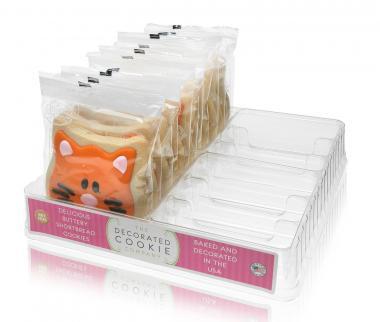Thermoformed packaging can do “more with less” in a number of fundamentally beneficial ways. Squeezing more out of a package design considers all the goals a package is trying to achieve. Here are five ways that thermoformed packages can do more.
1. SKU Rationalization
Simply said, this means reducing the number of packaging “footprints” for product lines. You get “more” versatility from “less” package sizes. On a product line with many SKUs, there can be significant savings in development, production, and storage in using the same outer “footprint” or shell over several SKUs. The task of communicating product identification and information can be shouldered by the paperboard component of the package, and small variations in the product sizes can be accommodated with paperboard or thermoformed inserts or trays.
2. Combining Multiple Components
The thermoforming design and manufacturing process is quite streamlined, so investment into different packaging formats, such as selling related items in a single package, can be achieved painlessly. The objective is to get “more” merchandising opportunities with “less” products to stock.
3. Retail Channel Customization
Retailers sometimes come to brand owners and ask for new packages based on where they want to sell a specific product. Or they may simply ask for a unique look so that the product appears “exclusive” to that retail chain. It’s possible to get “more” selling opportunities with “less” hassle by designing packages that can swap out components, or redesign parts of packages, easily to meet these demands.
4. Inventory Reduction
 Thermoformed blister packages can be developed and produced with relatively low run sizes. So, a brand owner can be “more” responsive to market ebbs and flows by having “less” inventory of components stored and “less” obsolete packaging components that you have to recycle.
Thermoformed blister packages can be developed and produced with relatively low run sizes. So, a brand owner can be “more” responsive to market ebbs and flows by having “less” inventory of components stored and “less” obsolete packaging components that you have to recycle.
5. Seasonal Packaging
Holiday and special event packaging is becoming more and more attractive to retailers every year. The advantages include “fresher” packages, flexibility for special displays, and opportunities to up-sell products within a category. Blister packages are easily customizable with added features such as special printing, textures, decoration, or foil stamping. Retailers appreciate when brand owners do the legwork and suggest and supply “more” merchandising ideas for “less” work on their part.
Of course, these five ways that thermoformed packaging does “more” with “less” can overlap. And that’s often a good thing. Today’s package designers are trained to keep design options as open as possible, as market forces favor agile brands and agile designs. The skill is to identify the most likely product and package design progressions, design with those in mind, and still plan for the unexpected. That’s why it’s smart to start with a versatile packaging format in the first place.



